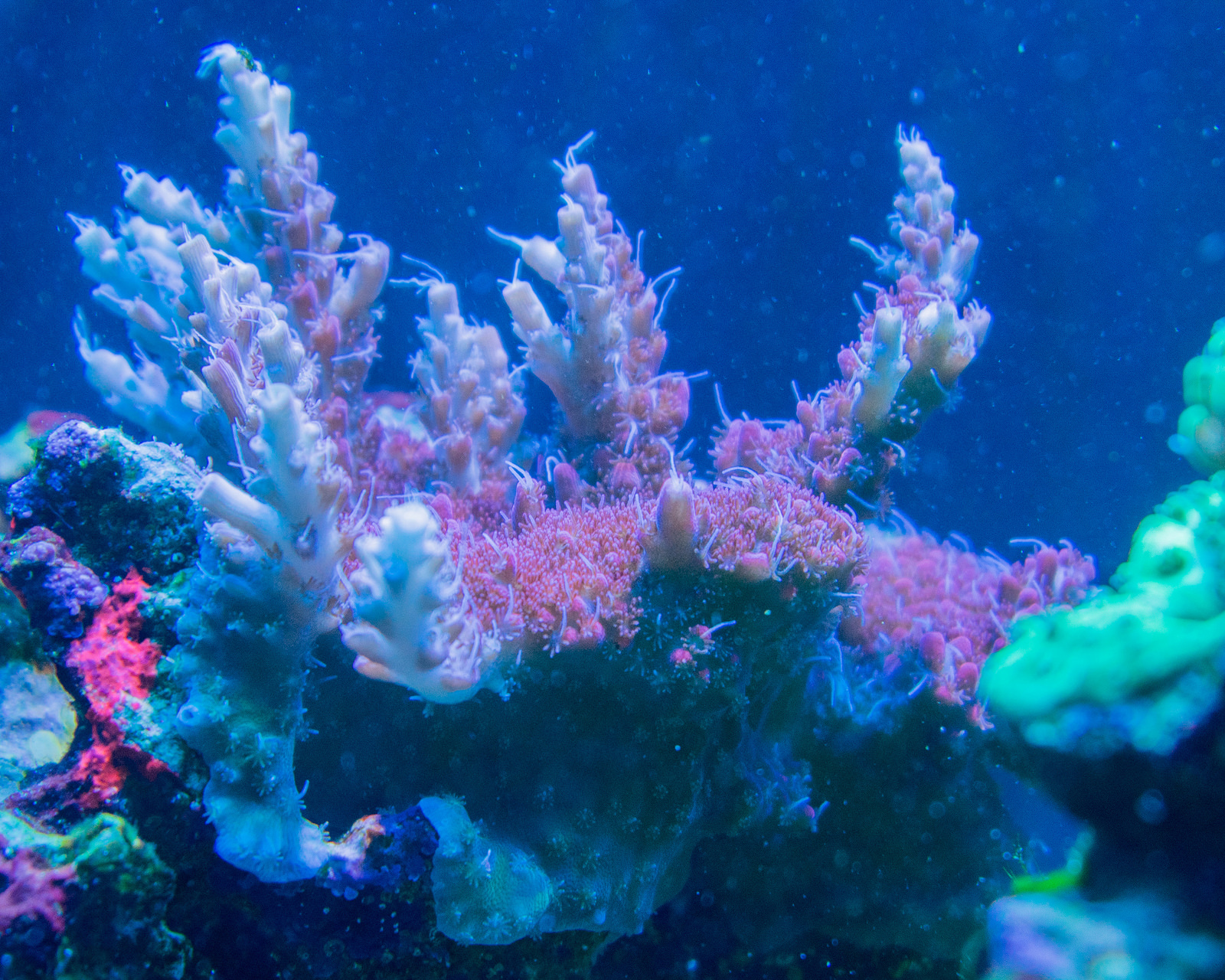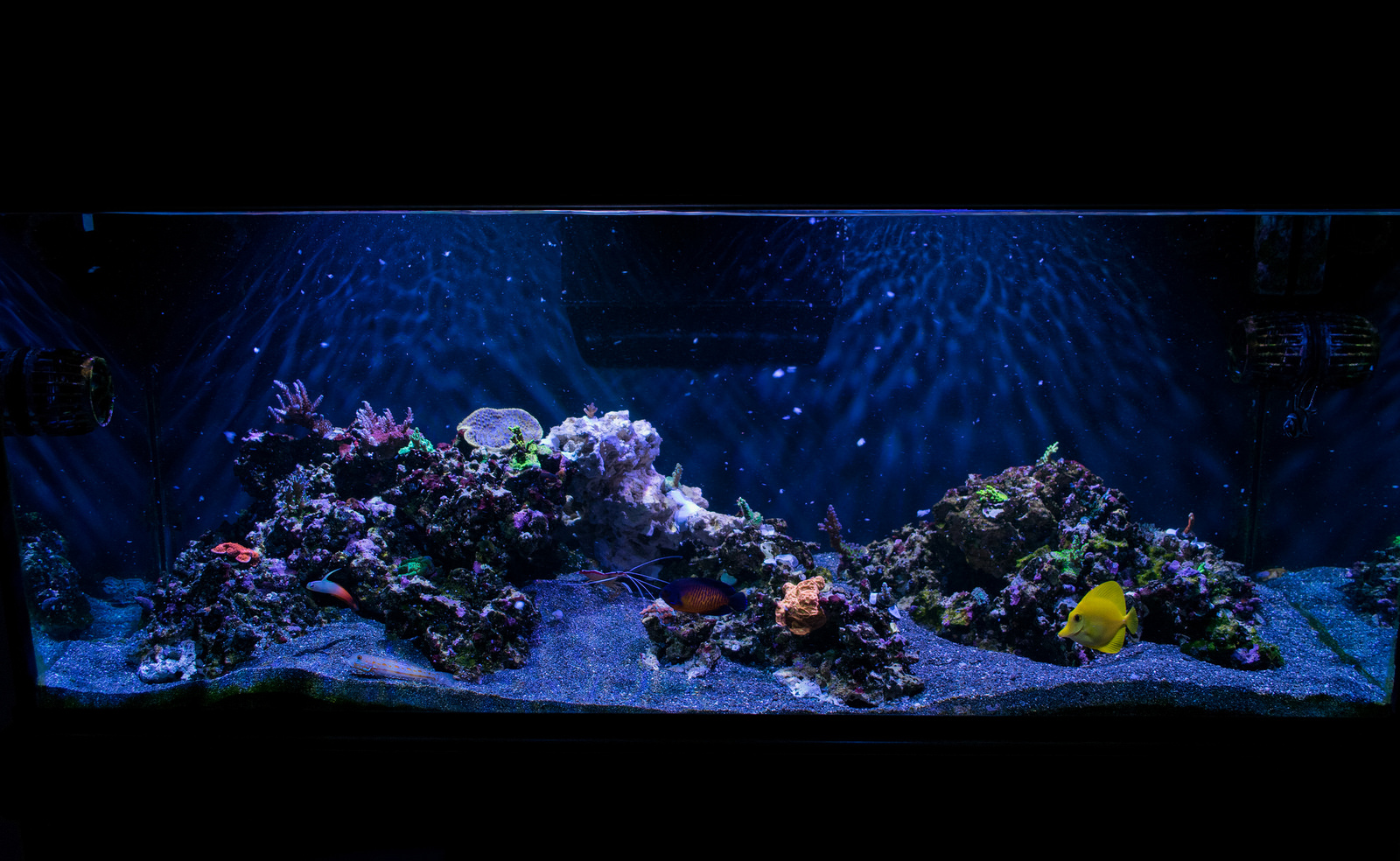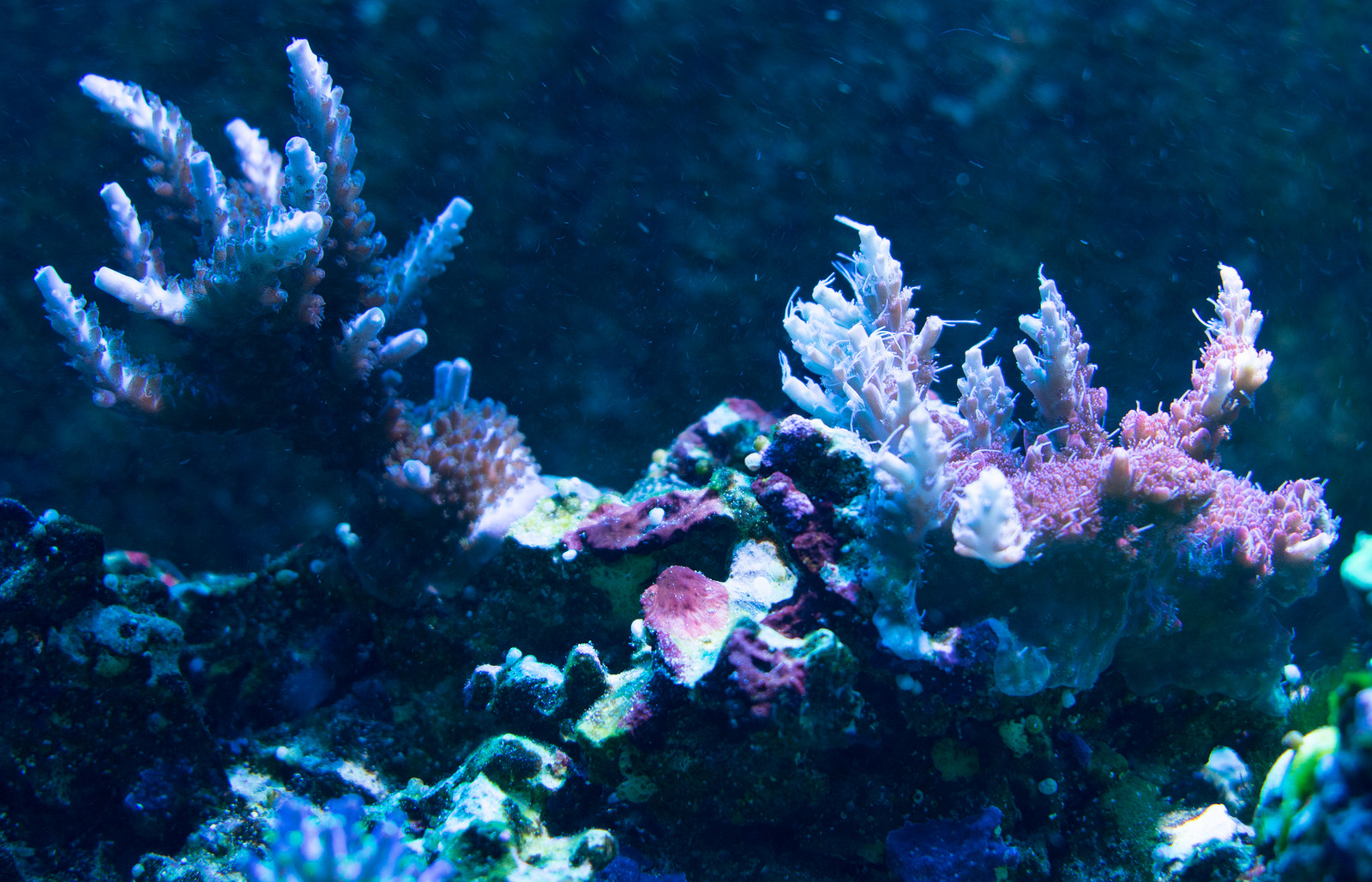Was just scrubbing the algae off the back of the tank and noticed a response from a few of the corals. The image is purposely over exposed (I'm no Photoshop guru, sorry) so you can see the polyps in the shaded areas better but they sure did open up to grab hold of whatever may be coming their way.






















